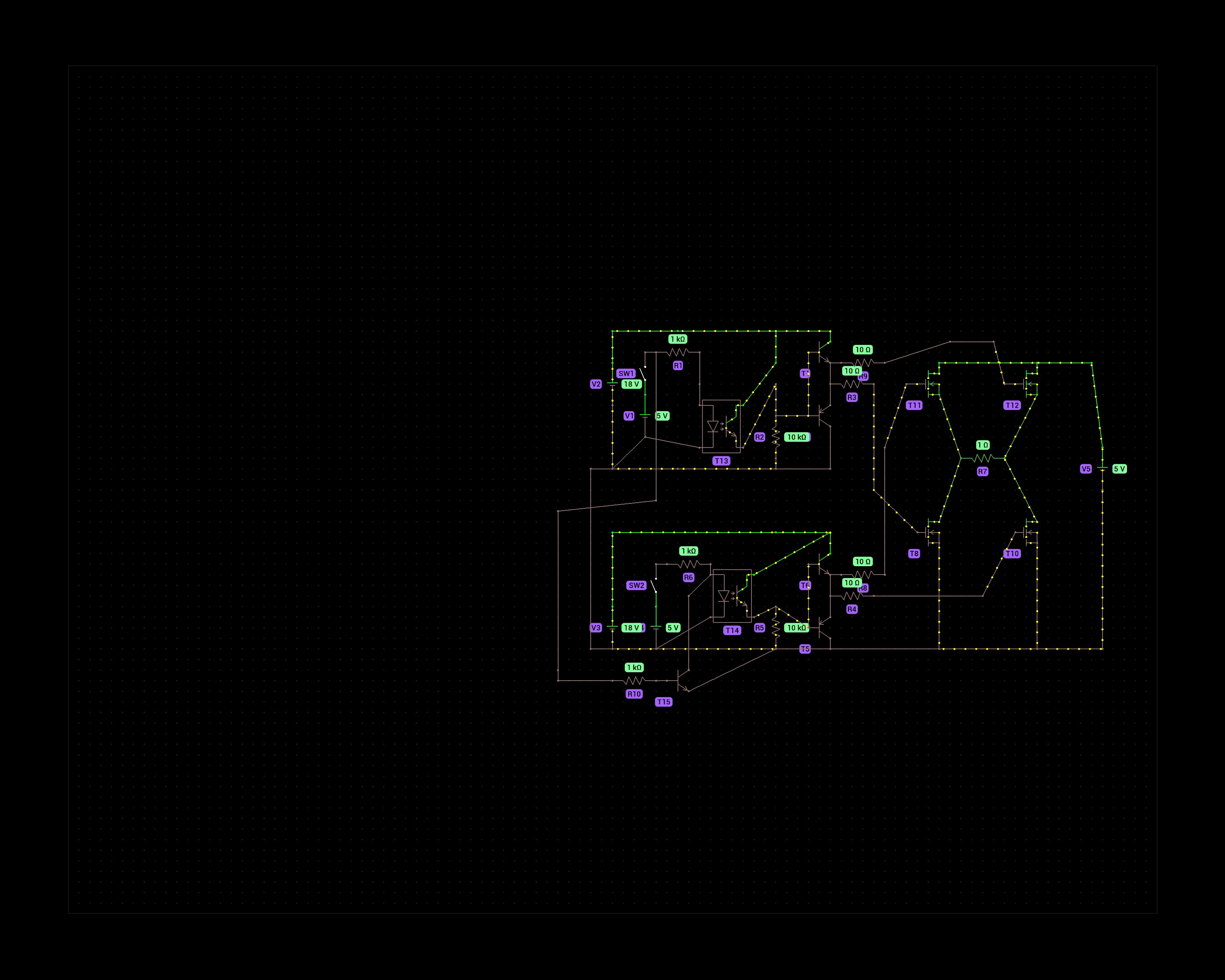this post was submitted on 07 Aug 2024
18 points (100.0% liked)
Ask Electronics
3316 readers
2 users here now
For questions about component-level electronic circuits, tools and equipment.
Rules
1: Be nice.
2: Be on-topic (eg: Electronic, not electrical).
3: No commercial stuff, buying, selling or valuations.
4: Be safe.
founded 1 year ago
MODERATORS
you are viewing a single comment's thread
view the rest of the comments
view the rest of the comments

Right, sorry about that. I made the simulation on my phone with the Proto app.
I figured the push pull part is good practice with mosfets. It's partially the learning experience and if the motor stalls it could draw several amps.
I won't be doing PWM, just on and off so maybe just the optocoupler is good enough.
I'd have to order dedicated gate drivers and have a lot of 547 and 557 transistors in stock at home.
In that case I would omit the extra transistors and use only the optocouplers.
What sort of application is this? Having 18V somewhere and a 5V supply too that can output several amps is quite unusual.
Well, the whole setup is a semi automatic greenhouse. It has a 12 channel peristaltic pump, grow lights, heater and a plant shaker for pollination. I'm attempting to grow indoor tomatoes and chili's. Not weed although I have learned a lot from weed growers.
The system runs on a 24V power supply so that is easily accessible. The 18V comes from an LM7818 and the motor speed will be regulated with a buck converter module.
If I were you, I would not step down the 24V, but use that to drive the motor with pwm. It requires a bit different H bridge but overall it would be simpler. But if you already have a converter module that is good enough this works too.
That would require an H bridge with two Pmosfets on the high side indeed. And a way to prevent the gate voltage from going below -20V on those.
The PWM frequency on arduino nano is also a bit slow for controlling a motor so a 555 circuit needs to be added then. I have a large amount of XL4016 modules that work well though.
Thanks for the advice!
I don't think the PWM on the arduino is slow for your application. Motors are actually great for filtering. Even if the current is not filtered, mechanically it is so slow that you can go as low as 100Hz and still drive the motor acceptably well.